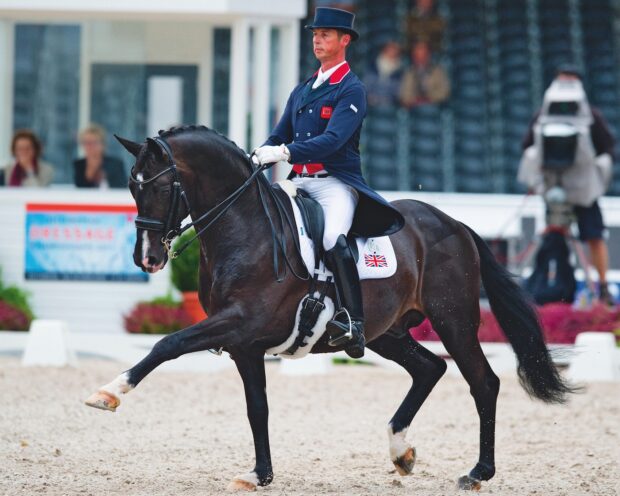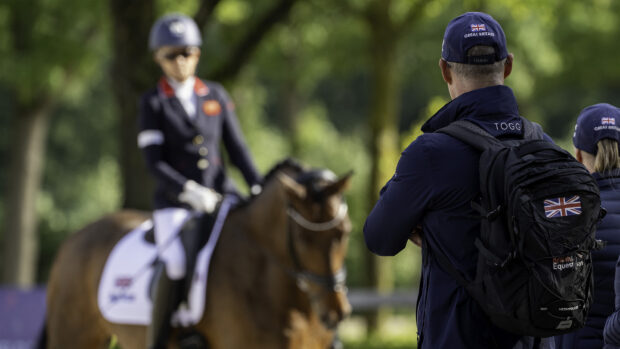Want to get that winning edge between the boards? We find out the secrets behind top dressage riders’ successes
1. Gareth Hughes (above)
“Watch riders that you admire and have an image in your mind of how you want you and your horse to look. An impression in your mind helps when you are riding on your own, as it gives you something to work on. Learning ‘feel’ is also important as it means you can make corrections without someone having to tell you.”
2. Alice Oppenheimer
“Always take your time in the initial warm up phase to ensure that your horse is physically and mentally ready to work before you start the ‘work’ phase of your session. I like to feel that they are working in front of my leg and forwards to the contact before asking for anything more demanding.”
3. Dan Greenwood
“Make time to look at your horse and assess him properly every other week. Either get someone else to sit on so you can take a look and get some feedback, or lunge him. Is he moving freely and equally? Especially in the winter, it’s too easy to take rugs off, tack up and get on and go. You’ll then have a clear picture in your head of what your horse needs to work on.”
4. Isobel Wessels
“Improve the contact. As a judge, I see people lose marks because of the contact all the time. It’s something that affects every single movement and if you have the contact better, your horse will be nicer to ride and the picture will look more correct, earning you more marks. Spend some time during the winter months really improving the contact through lots of transitions, so that you have the horse really in front of you, taking the bridle from behind.”
5. Spencer Wilton
“At home, I spend a lot of time achieving the ‘perfect’ feeling underneath me, but at a show, a limited warm up time means it’s not always possible to create that feeling before you go in the ring. The art of good training is knowing how much time to spend on waiting for that perfect moment and teaching yourself and the horse what to do when the moment isn’t perfect. That way, you have all bases covered.”
6. Lara Butler
“Training a horse is like teaching a young child — they don’t know the difference between right and wrong, so it is our job to guide them in the right direction. Always make it fun for the horse and let them know you are pleased with what they are doing, as they will try a lot harder for you.”
7. Judy Harvey
“During the winter months, make allowances for the weather and any time off your horse might have. Don’t have too high expectations and expect your horse to get straight back to the stage you left off in your last session. He needs more time to supple up in the winter and expend any excess energy from being stabled more, so allow for this when you start a session.”
You may also be interested in..

9 dressage questions you’ve been meaning to ask your trainer

Subscribe to Horse & Hound magazine today – and enjoy unlimited website access all year round
Horse & Hound magazine, out every Thursday, is packed with all the latest news and reports, as well as interviews, specials, nostalgia, vet and training advice. Find how you can enjoy the magazine delivered to your door every week, plus options to upgrade your subscription to access our online service that brings you breaking news and reports as well as other benefits.



